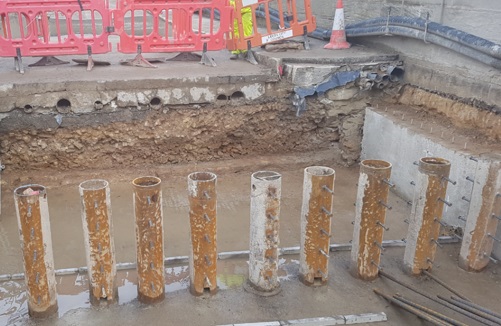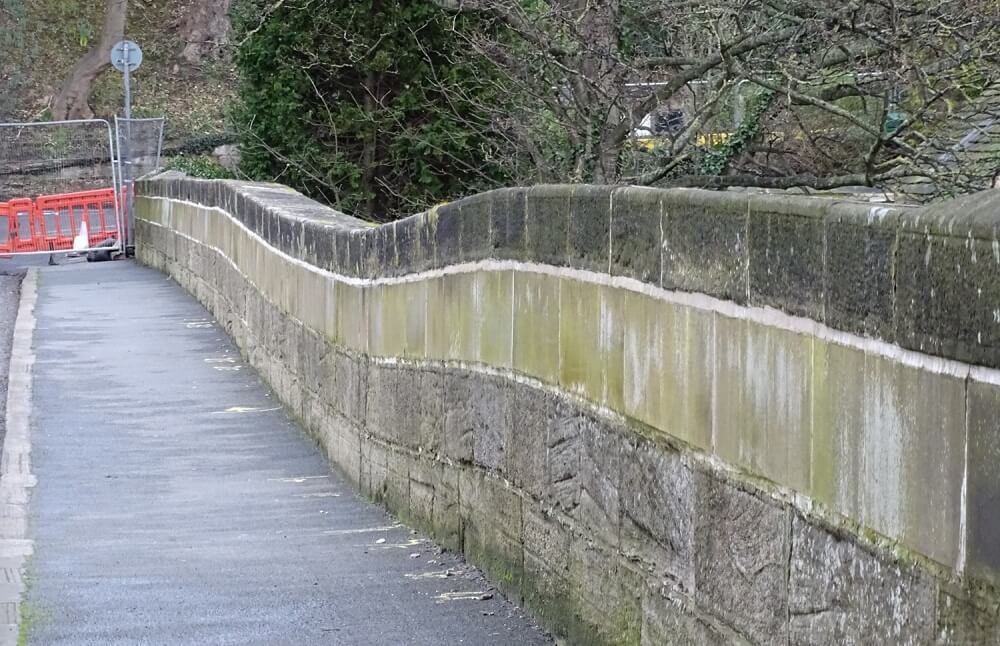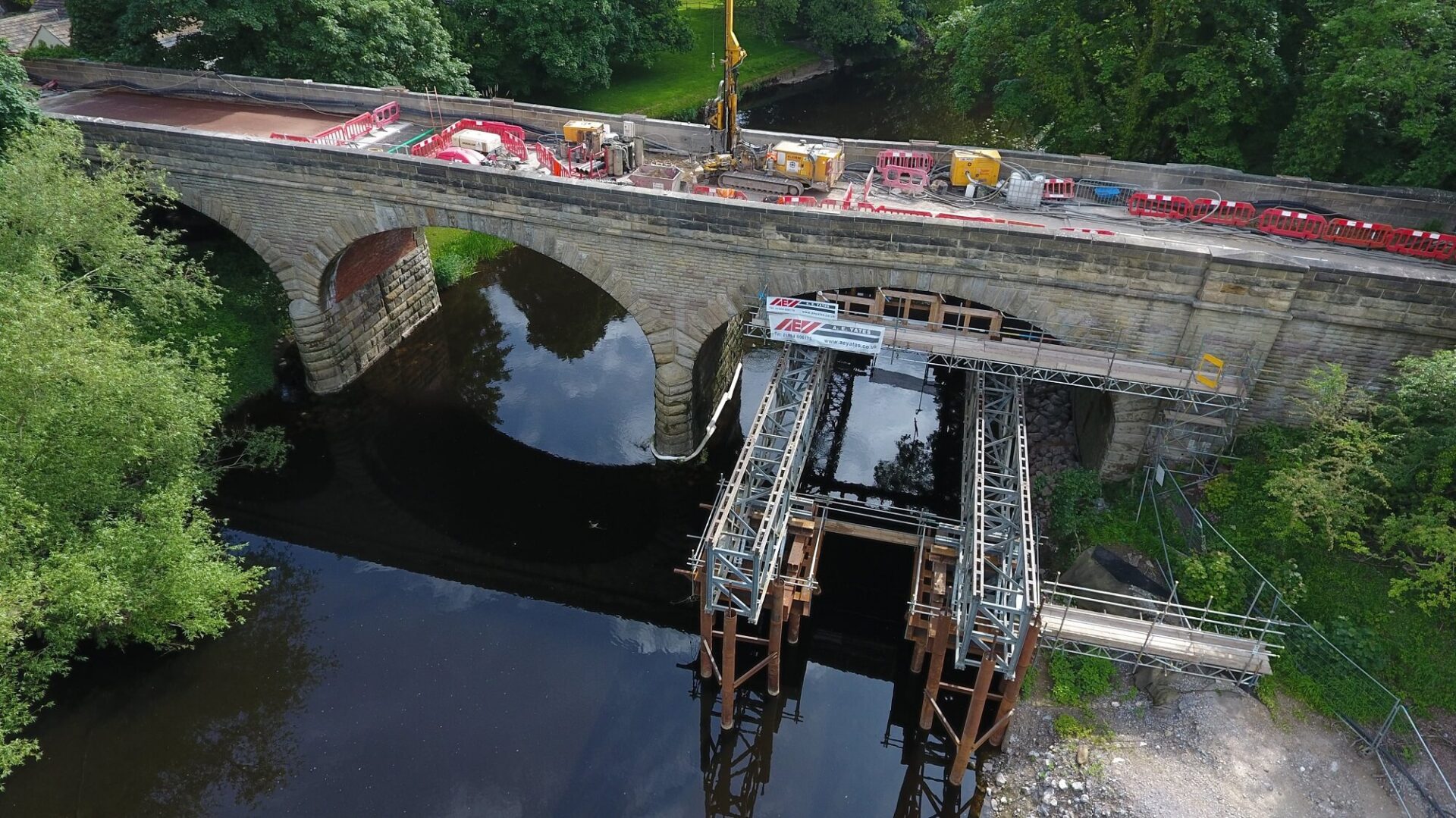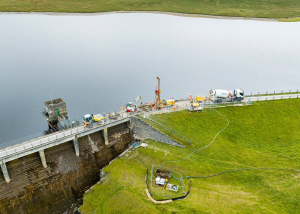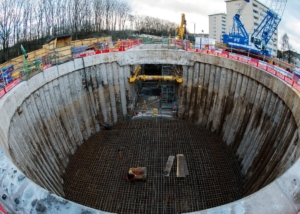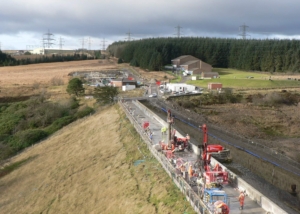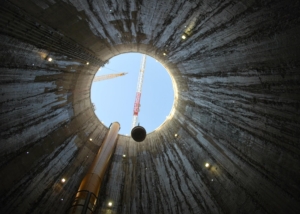PROJECT OVERVIEW
Linton Bridge was constructed between 1852-1893 to replace an old ford across the River Wharfe between the villages of Collingham and Linton, near Wetherby in North Yorkshire. It is a Grade II listed arch bridge in a scenic location with wildlife including trout, otters, kingfisher. The bridge almost collapsed during a storm, and therefore it required an innovative foundation solution to provide a new integral bridge inside a fragile, old listed masonry arch bridge. Bachy Soletanche was selected by the Principal Contractor due to a combination of technical capability, design expertise and operational excellence.
DESIGN AND PLANNING
Ground investigation works including, rotary cored boreholes, drone surveys and point cloud surveys, were used by the engineer to assess the bridge and evaluate feasible repair options. Potential solutions included a new integral deck saddling the arch, raking minipiles from the river level, or installing vertical piles from deck level using a range of methods.
A collaborative approach was adopted between all parties to develop the best solution for the project. A range of factors had to be taken into consideration including retaining the listed structure, vibration limits, restrictions on access, speed of repair and the ongoing bridge maintenance following the completion of the project.
PILING OPERATIONS
Bachy Soletanche’s involvement was to design and install 52 partially cased auger bored piles with a 340/300mm diameter. These piles provided lateral and vertical restraint to the existing bridge abutments.
The construction process involved predrilling 12 metres through the existing sandstone abutments, before continuing the bore depth until approximately 25m deep, ensuring the pile toe was a minimum of two metres into the underlying bedrock. Once the bore had been completed, a full length 220m diameter casing was inserted into the cavity. The casing was then grouted into place completing the pile.
The cased auger system was adopted as it did not require fluid or compressed air, thereby reducing the risk of damage the fragile structure. Maximum vibration levels did not exceed 5mm/s and there was no evidence of any damage caused to the abutments or piers during the installation process.
The project was extremely challenging, but the collaborative approach taken ensured the scheme was delivered successfully, saving a Grade II listed structure for future generations to use and enjoy.
